Coming of Age
The elderly aren’t the technophobic shut-ins they’re so often thought to be. Finally design companies are starting to wake up to their needs
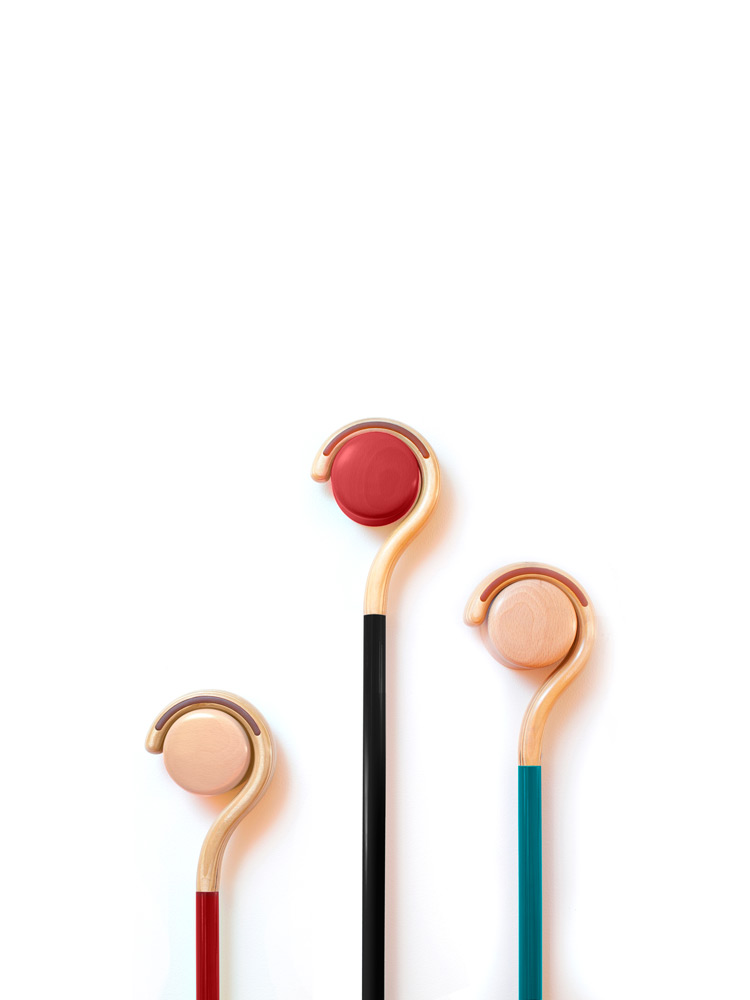
Every Thursday, Barbara Beskind arrives for work at the offices of design and innovation consultancy Ideo in San Francisco. A former occupational therapist, Beskind has been working at the firm for a couple of years, specialising in designs for ageing. She’s invented wearable airbags to guard against falls, and eyeglasses featuring cameras and speakers to help dementia sufferers identify people and places around them. Beskind is opinionated, passionate, driven – and she’s 91 years old.
Beskind isn’t typical, yet she’s symptomatic of a slow but radical shift in expectations of old age from design firms, brands, startups, governments and seniors themselves. Healthier lifestyles and extraordinary advances in medicine mean life expectancy has risen dramatically. A man born in 1901 could expect to live to 45; now men are likely to live well into their 80s. It’s an increasing rate, too: everyday life expectancy in the developed world rises by five hours.
Silicon Valley’s tech barons are also aiming their disruption ethos and deep pockets at ageing. Google’s biotech research company Calico, founded in 2013, is exploring neuro degeneration and cognitive decline. Human Longevity Inc, set up by XPrize founder Peter Diamand is, is using advanced technologies such as genome sequencing, the human microbiome, proteomics, informatics, computing and cell therapy to tackle the diseases of age-related biological decline. PayPal founder Peter Thiel is investing in radical age researcher Aubrey de Grey’s SENS Foundation, which funds projects around the world using regenerative medicine to repair the ravages of ageing.
The personal, social, political, and business implications of that are being felt across every part of the world. Companies are waking up to the fact that designing products and services ‒ from cars, cosmetics, housing and consumer electronics to digital technology and robots ‒ to cater to this multi-trillion dollar market is both useful and lucrative.
Coming of Age
“There is a growing demand for companies to think about elders as consumers, not patients,” says David Glickman, chief operating officer at smartwatch startup Lively, neatly capturing this social shift and business opportunity.
Richer, healthier, longer lived, more independent, and more expectant, seniors are far from the financial misers of stereotype; they’re a consumer superpower. The AARP, a powerful lobbying group which supports over-50s in the US, has coined the term Longevity Economy. The Longevity Economy includes $4.6 trillion a year in consumer spending across everything from food to entertainment, travel to financial services. “Ageing tends to indirectly or directly touch upon everything,” says David Sinclair, founder of the UK’s International Longevity Centre, a leading think tank on ageing and demographic change. “But I don’t think there’s anyway near enough innovation relative to the potential.”
The process is still slow. “Just because I’m over 60, no one wants to sell me anything any more,” author Germaine Greer once famously quipped. Why? Brands are scared of reaching out to older people for fear of frightening off younger ones.
“Age isn’t sexy to most people, youth is,” explains Paul Bennett, chief creative officer at Ideo.
Inclusive Design
Generally older peoples’ needs, aspirations and values are poorly understood. “The grandmother of one of my friends decided in her 80s that she wanted to learn to weave,” recalls Bennett. “So my friend’s mother and father said, well, let’s just buy her a cheap loom because she won’t need it for long. And she said: ‘I want the best loom possible, I’m in the period of my life where I deserve the best, not something that’s going to last for three years’.”
Desirability is as central to success in the older category as any other, says Iggy Fanlo, chief executive of Lively. “The senior products category has been flooded with items that are big, beige and boring. Whether the user is eight years old or 88 years old, he or she can appreciate beautiful things. Design is critical. People will buy and use products they want, not products they ‘need’. It’s a pet peeve of ours.”
Whether someone is rich, poor, old or young, they can recognise the smart thinking and high\- quality making that have gone into a design
Instead of cheap, poorly designed products aimed specifically at old people, Bennett, Sinclair and Fanlo all argue for inclusive design, a practice that seeks to make items universally appealing, empathetic to a wide range of users’ needs and, importantly, aspirational. “It’s not making a product that’s good for granny, it’s making something that’s easier for me, for you, for my kids,” says Jody Holtzman, senior vice president of thought leadership at AARP. “You optimise the market opportunity for the entire age continuum.”
By expanding the usability of their products, companies can appeal to all age groups without pigeonholing them: Sinclair likes to think of this approach to design as age-neutral, but age-aware. He points to Ford’s Focus as a good example of a product not marketed to old people. Being spacious and easy to drive made it a bestseller among all age groups.
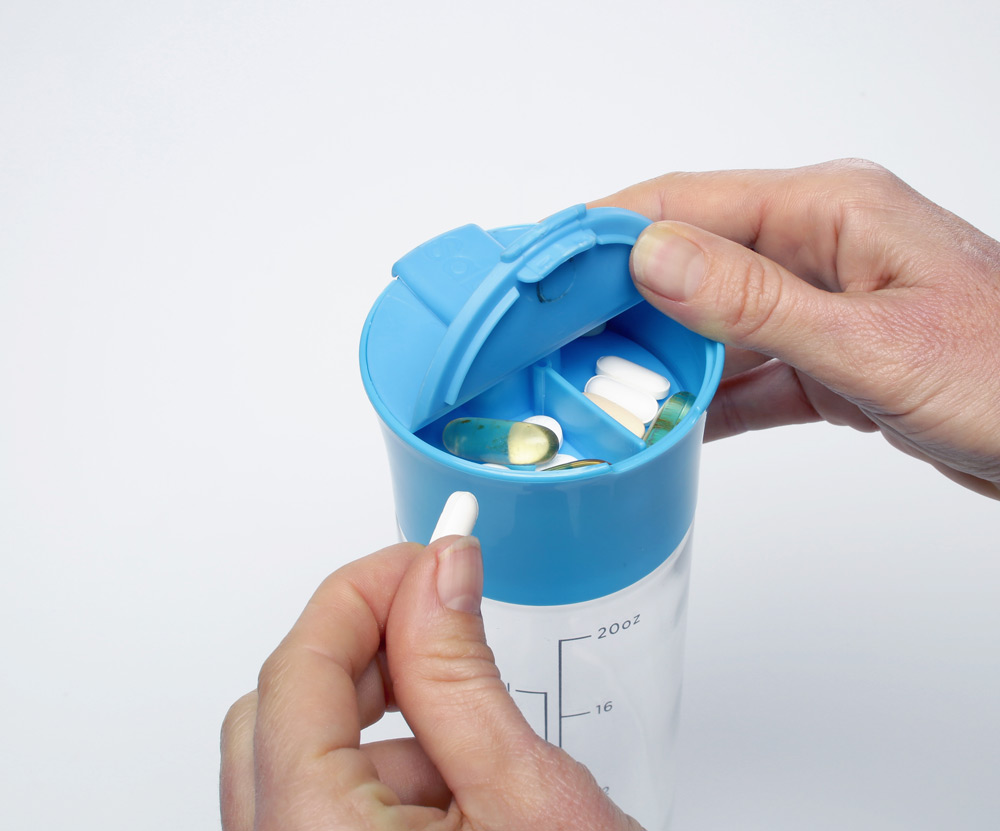
Above: the ‘Thrive’ carafe, by Sabi, helps organise daily med doses and wouldn’t look out of place in any contemporary kitchen
Amazon’s ongoing obsession with easy-to-open packaging is another example of this approach. As is Google’s search box: six years ago, the search giant made the box bigger with no fanfare, because they realised society was ageing. Nintendo’s blockbuster Wii console has proved a hit with this older demographic, too, for the same ease-of-use reason. In fact a recent commercial for the Wii Fit Plus featured actress Helen Mirren, who is 69.
“Design and quality is universally appreciated,” says designer Yves Béhar, founder of Fuseproject, the design studio behind projects such as Jawbone Up, the August Connect lock and, recently, Sabi pill boxes for the elderly. “Whether someone is rich, poor, old or young, they can recognise the smart thinking and high-quality making that have gone into a design.”
Design for Aspiration
While some mainstream brands have been quietly introducing products whose appeal is expanded to older people through inclusive design, some startups are explicitly designing thoughtful, beautiful products that cater to their emotional and social needs as much as their physical ones.
“We think inclusive design is great, but there will still be particular obstacles that need specific products,” says Anna James, founder of Spring Chicken, a UK ecommerce site for
the elderly. James, a former Mothercare marketing director, founded the company after difficult and dispiriting experiences shopping for her father, who suffers from Parkinson’s Disease.
“Spring Chicken aims to provide products to help people make the most of a longer, healthier life,” she explains.
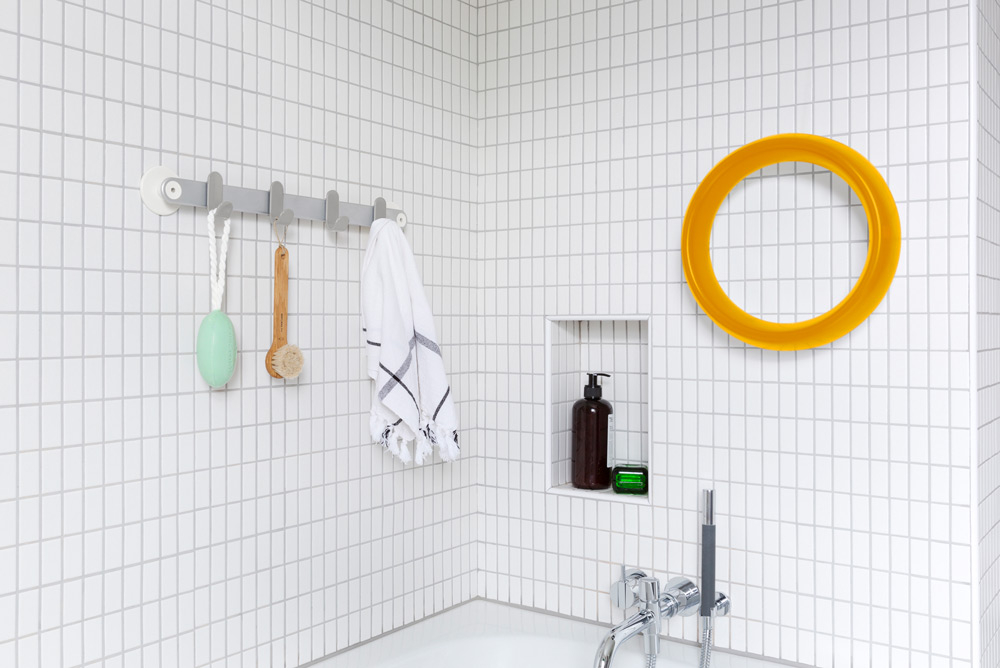
Above: ‘Space’ hooks, by Sabi, are specially designed to installed by the less mobile amongst us
The site’s most popular products point to older people’s needs. These include easy-to-use phones, tablets, radios and remote controls as well as bright and stylish walkers. “Historically, products for elderly people were prescribed by the NHS,” says James. “Now, good design is beginning to be looked for, and it is provided by new interesting companies.”
One company she cites is US startup Sabi. Its products – created by top design firms Fuseproject and Map – include Thrive, a series of pill organisers and accessories; Roam,
a line of walking sticks and accessories; and Space, a collection of products for bath and home. “Before Sabi came along, pill organisers were ugly and sterile, walking canes were squeaky and geriatric, and bath grab bars were downright ‘hospital’,” explains Assaf Wand, founder of Sabi. “We made these products craveable and beautiful and replaced their former identities as ‘medical assistance devices’.”
Increasingly, older people, healthier and more productive than ever, don’t see themselves as any different to their younger selves, says James. Products, says Wand, should reflect that. “Aspiration becomes the distinguishing factor in a world of products that scream out someone’s deficiencies instead of the fact that they are fashionable, healthy, and a vital part of the community.”
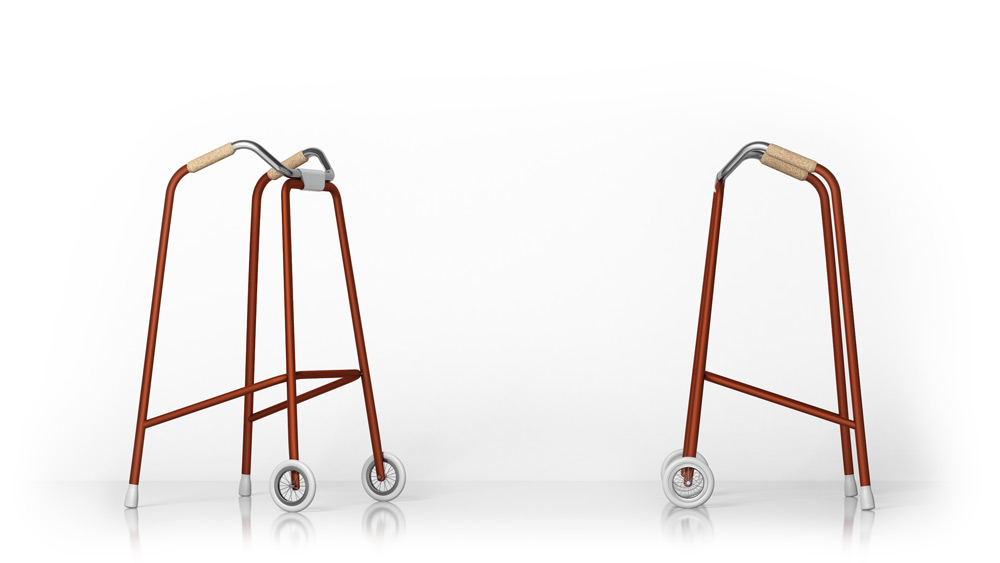
Above: Ideo’s strollers, with their sleek design, are a world away from the cold, clinical zimmer frames most people are used to
Age\-Neutral but Age\-Aware
Placing end users such as Beskind at the heart of the design process provides vital insight. When focusing on older adults most designers don’t become absorbed in their lives, observes Glickman. They need, he says, to learn “what’s different for them on a daily basis: things like vision, dexterity, complexity, colours”.
Designed to be bright, fun, ageless, timeless, and to be put up by a 70-year-old woman on her own, Sabi’s Space range includes a shelf, rail, hooks and mirror that wouldn’t look out of place in a modern design magazine. Yet a deep understanding of the end user’s experience shaped every detail of the product, explains Map designer Jon Marshall, who worked on the products.
“Ergonomics is key,” he says. “We used lots of prototyping to make sure all the products worked perfectly. We also worked with a bio- mechanical engineer on the form of Hold, the circular grab rail. We paid particular attention to the design of the packaging, making sure it was easy to open, descriptions were concise and easy to understand with detailed, clear instructions with legible font sizes.”
Thrive’s designer Béhar says that the special constraints of designing for the elderly offer a rare opportunity to create a unique product and experience. “I also see it as a chance to build a visual iconography that gives the product and company a distinctive place in a marketplace often crowded with me-too products,” he says.
Technology Will Save Us
Design, and specifically user experience design, is also reshaping one area long considered problematic for seniors: technology. Apps such as Apple HealthKit, Nike+ Training Club and Strava, and wearables such as Fitbit are already helping people of all ages live healthier, more informed lives. They are lucrative too. Health and wellness is projected to become a $30 billion business over the next five years, says Holtzman, and advances in this field will build an early, and hopefully lifelong, habit of health monitoring.
“There’s this stereotype that seniors don’t mix well with tech,” says Seth Sternberg, co-founder of in-home care startup Honor. “But I think that’s a misunderstanding of what good tech is. A car
is an unbelievable piece of technology, yet people don’t see cars as technology, they just work. So a technology solution for seniors shouldn’t feel complex, it should feel like it’s making life better.”
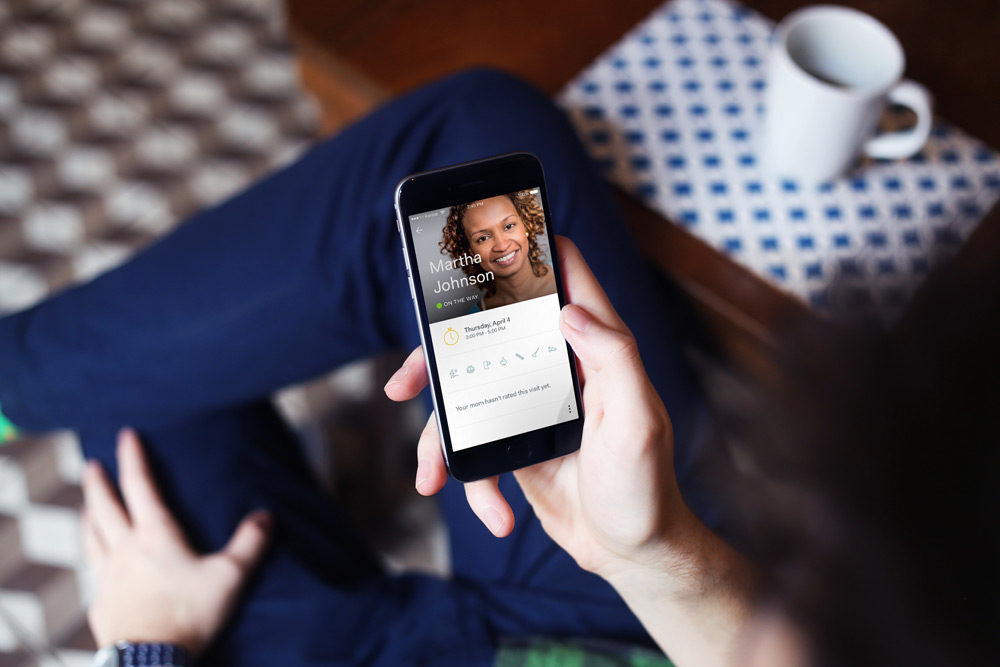
Above: Honor’s smartphone app helps organise and keep tabs on visits from care workers
A technology solution for seniors shouldn’t feel complex, it should feel like it’s making life better
Sternberg’s design principles from building Honor? Clean, simple and clear, which, he says, leads to intuitiveness of use. Honor recently received $20 million in funding from top venture capital firm Andreessen Horowitz; Sternberg is hoping to tap into the technology-for-seniors market, which is set to grow from $2 billion to $20 billion a year according to an estimate from researcher firm Aging in Place.
Technology also enables seniors to be freer, connected and less dependent too. “This cohort is very independent, they’ve had cars for a long time, information is disseminated quite widely and people have a lot of control in their lives,” says Sternberg. “People can trade their own stocks online: you used to have to call a broker, now you don’t need to. So I think as people age they want to maintain control and independence.”
Ultimately companies such as Honor want to go further and use technology to move from physical needs to solving the wider psycho-social problems of loneliness and boredom. “We think about the whole human,” says Sternberg. “Time and time again people are noticing that when you focus on someone’s overall well-being you get substantially better medical outcomes.” And happiness, after all, tends to come from interaction with friends and family.
All Watched Over by Machines
Another burgeoning field is telehealth, which aims to take the strain off hospitals by allowing older people to stay at home but communicate with care providers at a distance; to alert a carer to a fall, for example. Business information agency IHS predicts that telehealth will grow 50% year-on-year to become a $1.9 billion industry in the US by 2018. GE, Intel and Philips are among the companies launching ‘ageing in place’ products, which use cameras, sensors and video conferencing to monitor those with chronic conditions within the home.
Design plays a vital part in integrating these solutions, explains Alan Davies, director of home healthcare for UK and Ireland at Philips. “Regardless of the demographic, your offering needs to be useful, engaging and appealing. So if your demographic needs some support at home, the offering needs to be helpful and subtle; not clinical and cold. Equally, the data interfaces need to be presented in a way that people will want to access, such as TVs, tablets and mobile, for example.”
A Helping Hand
Ageing peacefully is the number one desire for seniors, and emerging technologies including home robots, pervasive computing and machine learning software, matched to improvements in existing tech such as voice recognition, promise to help them do that.
Take Roomba’s robotic vacuum cleaners, 10 million of which are freeing people – including seniors – from everyday chores. Or Amazon’s voice-activated smart speaker Echo, which makes shopping, turning lights on and off, searching the web, and listening to the radio as easy as speaking. Meanwhile MIT Media Lab spin-off Jibo is a ‘family robot’ which responds to voice commands, welcomes you home, facilitates live streaming with family and friends, reads out messages and calendar tasks, and takes photos. Markets such as Japan with older populations and a shortfall of caregivers are already experimenting with caregiving robots like GiraffPlus and Paro, a robot seal designed to comfort people with dementia.
“Robotics in personal and domestic applications has experienced strong global growth,” writes Martin Hägele of the Fraunhofer IPA research institute, author of the World Robotics 2014 report. “Future product visions point to domestic robots of higher sophistication, capability and value, such as assistive robots for supporting the elderly, for helping out with household chores and for entertainment.”
Catalia Health, founded by Cory Kidd, is a software and hardware startup that uses a small robot and smart software to hold conversations with people to help them change their behaviour and adhere to medical regimes. “The platform combines artificial intelligence, psychology, and medical best practices to successfully engage patients over an extended period of time,” explains Kidd. “This intelligence works to make each conversation with a patient unique; conversations are delivered through mobile, web, and robotic interfaces.” Artificial intelligence allows for personalisation, and, says Kidd, research has shown that robots build longer-term engagement with people than screens do.
An Age of Agelessness
As we live longer, healthier, more active lives, we expect more from everything, including work, education, products and public services – and that shift is reframing age altogether. We want to grow, not fade; to stay in control; be independent and productive. We want to be connected, useful and happy, as well as inspired and delighted. Businesses and governments are slowly awakening to that multi-trillion dollar prospect, using design and technology to cater to both our physical and emotional needs.
“It’s not about ageing gracefully,” concludes Bennett. “It’s about defying the idea of age.”


